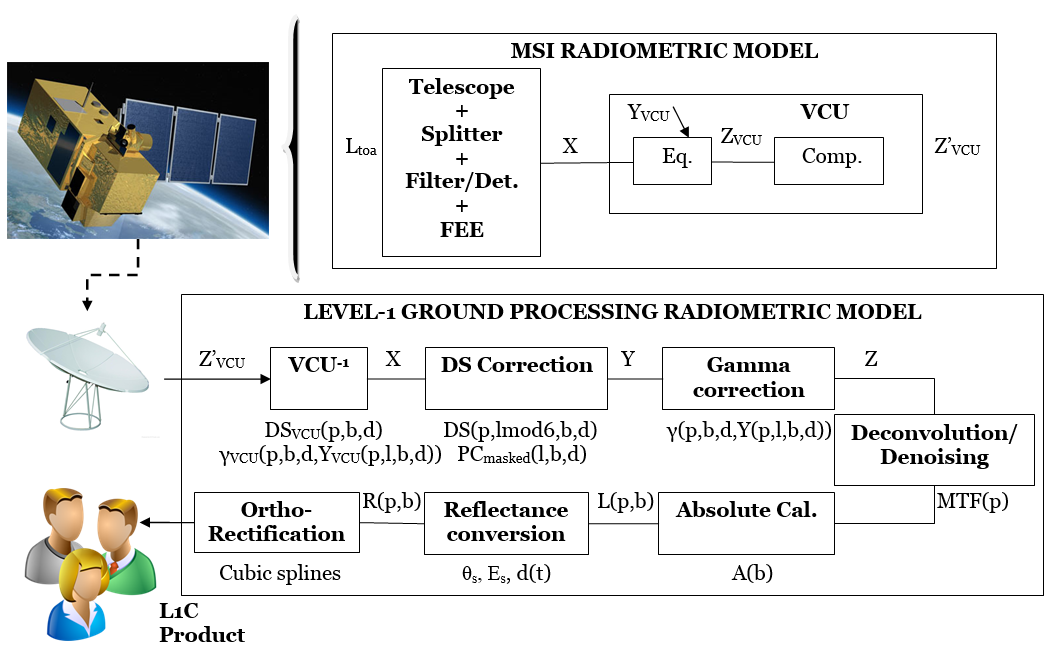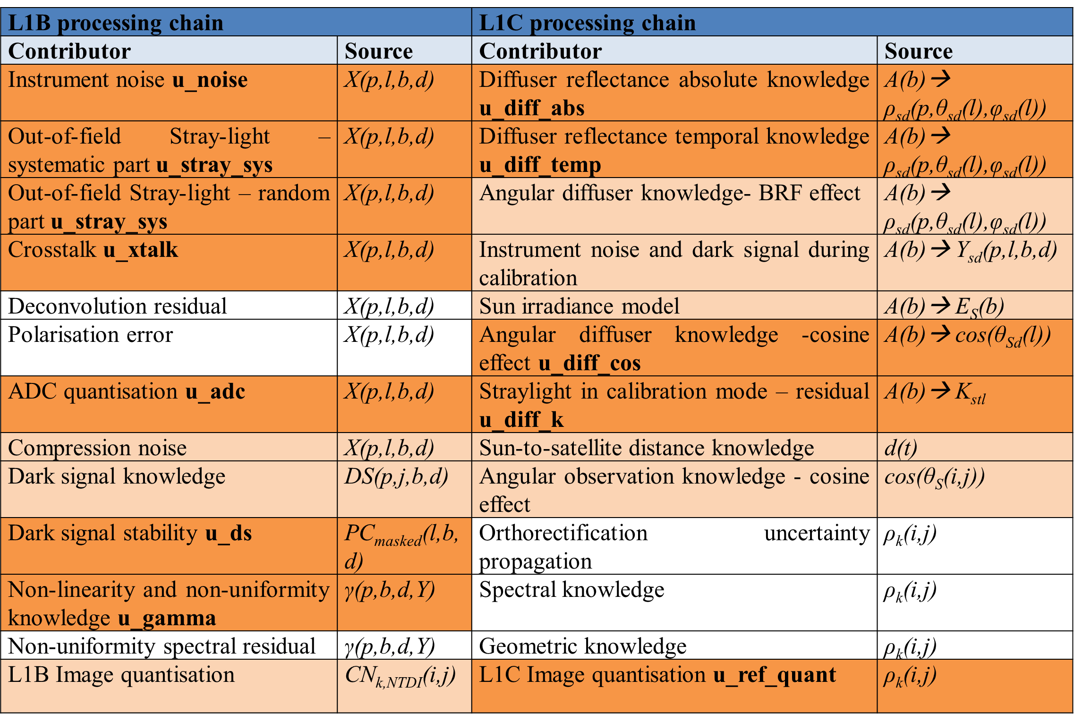- Activities
- QA4EO-RUT
- About
About
Overview
Objectives
The ‘Radiometric Uncertainty Tool' project has the overall objective is to define a generic software implementable methodology for assessing the radiometric uncertainty per pixel of the TOA radiance/reflectance products from a satellite, leading to an ‘uncertainty image'.
An initial prototype tool was developed at the SPPA group at ESA/ESRIN between June 2011 and September 2012. This first approach could obtain an initial tool and radiometric uncertainty analysis that successfully obtained a radiometric uncertainty image.
Since October 2014, this project is further developed as part of the ESA contract No. IDEAS+/SER/SUB/10 named "Sensor Performance, Product and Algorithms Maintenance and Operations of the Earth Observation Payload Data System". The main areas of research include:
- Carry out radiometric performance analysis in terms of the Radiometric Model including for Sentinel-2 and also the Uncertainty Contributors.
- Use GUM approach to define uncertainty combination and investigate critical covariance and constraints.
- Validate approach in Mote-Carlo simulations on the radiometric model.
- Implement a software implementation approach and toolkit.
- Investigate types of application for different cases and user communities.
- Create User guide.
Overview
S2 L1 radiometric model
The radiometric uncertainty analysis starts by identifying the different steps in the Sentinel-2 MSI instrument and L1 processing chain. The figure below displays graphically these steps. The complete Sentinel-2 L1 radiometric model can be found in [1]

S2 L1 uncertainty contributions
From the previous radiometric model, it is possible to identify the sources of uncertainty at each step of the processing chain. The table shows the uncertainty contributions for the L1C product with the associated parameter in the model. The contributions in dark orange are included in RUTv1. The contributions with negligible impact are shown in light orange and, in white, the contributions to be included in next versions.

S2 L1 uncertainty combination
The model follows the GUM [2] to combine the L1 radiometric uncertainty. The equation for the expanded uncertainty (i.e. the uncertainty at a defined coverage probability) is

Two uncorrected systematic effects enlarge ONLY the expanded uncertainty.
No significant correlation between contributors has been identified due to the independent nature of the L1 parameters. This simplifies the combination of the standard uncertainty as shown.

The same concept can be applied to the different terms in the standard uncertainty combination model:



S2 L1 uncertainty combination validation
Validation of the central limit theorem and normal distribution
The GUM model relies on the assumption that a generalised central limit theorem applies to the combination model. In those circumstances, the standard uncertainty can be associated to the normal distribution and a specific coverage probability can be determined. An initial comparison to the Monte-Carlo method in [3] determined the validity of the normal distribution except at very low radiance levels (i.e. close to Lmin) levels). A more extensive validation has been performed. The figure below shows the difference between the uncertainty k=1 by using the GUM combination and by determining an area of the Monte-Carlo distribution symmetric from the mean. The range of radiance goes from approximately Lmin to Lref.

Impact of the sensitivity coefficient
The terms u'DS and u'ADC are further calculated as follows:


References
- [1] ESA. (2015). "Sentinel-2 MSI Technical Guide." from https://sentinel.esa.int/web/sentinel/technical-guides/sentinel-2-msi
- [2] BIPM, IEC, IFCC, ILAC, ISO, IUPAC, IUPAP and OIML (2008). Guide to the Expression of Uncertainty in Measurement, JCGM 100:2008.
- [3] Javier Gorroño; Ferran Gascon; Nigel P. Fox; Radiometric uncertainty per pixel for the Sentinel-2 L1C products. Proc. SPIE 9639, Sensors, Systems, and Next-Generation Satellites XIX, 96391G (October 12, 2015)